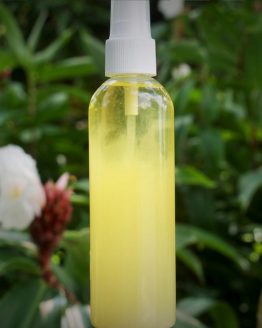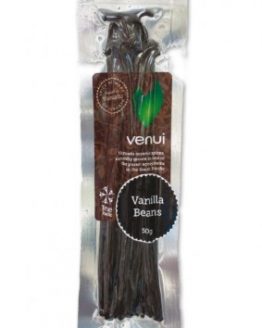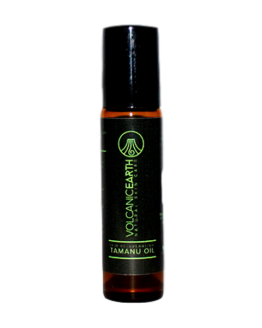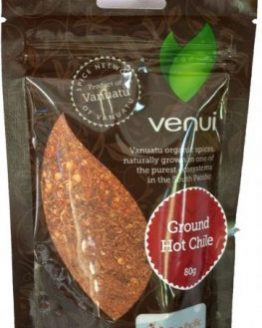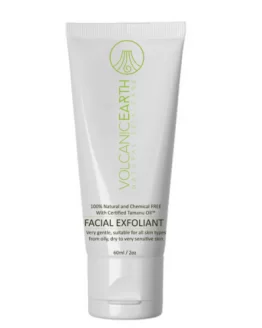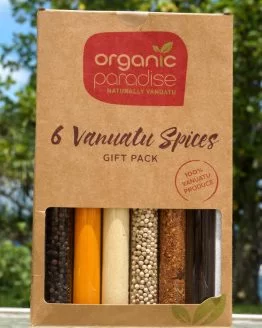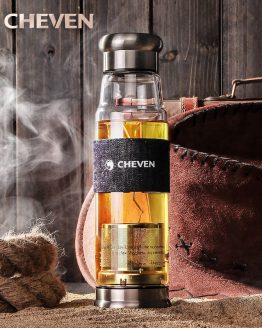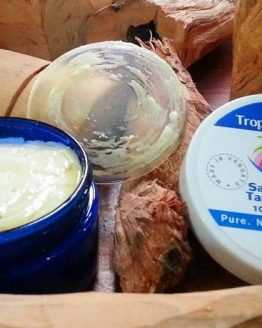Organic Nepal Tea LLC
Who are They? Organic Nepal Tea LLC is a social business venture of the Baskota family led by Nishchal Banskota, the youngest member in the family. It strives to market and promote Nepal’s First Certified Organic Orthodox Tea from Kanchanjangha Tea Estate and Research Center (KTE-RC). Nepal Tea LLC believe in providing the best quality tea to the tea drinkers around the world and it infallibly does so with the “Do Good to Others” motto and farmer’s first approach, which is what distinguishes us from the numerous commercial tea whole-sellers and retailers.
Nepal Tea LLC is also one of the very few companies which imports single origin tea directly from its Tea Estate in Nepal (KTE-RC), guaranteeing the quality and freshness of the tea while cutting the unwarranted middle-men reaping benefits from the farmers.

Kanchanjangha Tea Estate & Research Centre (KTE) is located at Ranitar in the remote hilly region of Panchthar district in eastern Nepal bordering the tea area of Darjeeling at an altitude of 1300-1800m. The tea garden lies at the foot hills of Mt. Kanchenjunga which covers the largest vegetation area with a combination of unique blends of natural factors for the growth of exclusive aromatic tea. The enterprise was launched in 1984 by Mr. Deepak Baskota along with the local farmers on a cooperative model. Over a 100 farmers joined hands, pooled in their marginal land holdings and became owners of the first orthodox tea plantation covering nearly 94 hectares of land. The land which was barely enough to sustain them is now utilized to produce High Quality Organic Orthodox Tea of the Himalayas.
Let’s Learn More About Tea Together!
TEA 101
The Life Cycle of a Tea Plant
All teas are made from a single plant known as Camellia sinensis. While there are various different breeds of the same plant, tea is exclusively made from the leaves of the camellia.
It might indeed be surprising but all the varieties of tea depend mostly on the production technique rather than the leaf. Of course, the quality of the leaves does play a vital role, however, the processing of tea (especially oxidation) is the sole determinant on what kind of tea is to be produced.
Teas can be generally classified into four categories with regards to its processing techniques namely – White Tea, Green Tea, Oolong Tea and Black Tea. The four forms have been described below.
(Please bear in mind that the descriptions are generally common to all the teas produced in the world, however, they have been written exclusively to describe Organic Tea produced by Kanchanjangha Tea Estate and Research Center, KTE-RC)
White Tea
White Tea is considered healthiest of all teas. This is primarily because it is made from the baby plant only in a specific time in the spring and undergoes virtually no processing. White tea consists of highly nutritious tip of the plant, which also makes it the tea with the least amount of caffeine.
- Processing
- As mentioned above, white tea goes through virtually no processing. The tea leaves are immediately fired after withering them for a short period of time. The processing of white tea does not involve any form of rolling, breaking or bruising. The dried buds have tiny white hairs, which give them a silver-like appearance. When only the buds are processed for white tea, it is commonly known as silver tips or silver needle in the tea industry.
- Flavor Profile
-
Since white tea is the least processed of all teas, the leaves tend to retain their natural appearance and characteristics. The color of white tea is generally pale light gold. They retain unique floral, jasmine aromas with taste notes of mildly sweet honey. White tea is absolutely mellow to taste yet has the highest health benefits, even more than green tea.
-
White tea is best as the base for other blended teas and is suitable for someone new to the tea world. As for the tea connoisseurs, it is considered the one of their favorites.
- Brewing the Finest Cup
-
White is generally brewed at very low temperature to retain its mild flavors and aromas. To brew the finest cup of white tea, use about two grams (the amount of a single tea bag) of tea per 100 ml of water of temperature 79 to 82℃ (175 to 180℉). In general, use not quite boiling water or let the water cool down for about 45 to 60 seconds after boiling. Steep for about 4 to 6 minutes to enjoy the subtle flavors of white tea.
-
*White tea is served without added milk and/or sugar.
- Health Benefits
- High amounts of anti-oxidants and theanine (a rare amino-acid found in high quality teas) are proven to promote good health, prevent damage cells and fight aging signs.
- Theanine present in white tea is believed to promote physical and mental relaxation and improve concentration.
- White tea is also considered to reduce anxiety and boost the immune system.
- White tea contains the least amount of caffeine and has stress-relieving and mood-uplifting abilities.
Green Tea
Like all other teas, Green tea is made from the plant Camellia sinensis. Recently, green tea has been gaining quite some popularity in world due to its abundant health benefits. In fact, green tea is considered to be one of the healthiest beverages.
- Processing
-
Green tea undergoes minimal oxidation in tea processing which helps in retaining the plant’s natural appearance and color. This also preserves the healthy properties of the plant.
-
The tea leaves are withered until they become soft and flaccid. It is then immediately fired and/or steamed to halt the oxidation process. The structure and shape is determined by continuously rolling the tea leaves during the firing process.
- Flavor Profile
-
Green tea flavors are rather complex. It depends on various factors such as plant varietal, harvest season, elevation and so on. However, green tea can be processed in two different ways resulting in two distinctly different flavors.
- One: Roasted/Fired Green Tea
These tend to have rather mellow flavor and subtlety in their taste. All KTE green teas are processed in this manner.
- Two: Steamed Green Tea
Mostly popular in Japan, steamed green tea generally results in bold taste and astringent flavors.
-
Green tea is known to have variety of flavors and aroma from floral to nutty, grassy to sweet depending on the aforementioned reasons.
- Brewing the Finest Cup
-
To brew the finest cup of green tea, use about two grams (the amount of a single tea bag) of tea per 100 ml of water of temperature 65 to 71℃ (150 to 160℉). In general, use not quite boiling water or let the water cool down for about 60 seconds after boiling. Steep for about 2 to 4 minutes to enjoy the aromatic flavor of green tea. Brewing green tea is considered rather complicated since steeping green tea for too long or in too hot water will result in a bitter and astringent brew regardless of the quality of the leaves.
-
*Green tea is served without added milk and/or sugar
- Health Benefits
- Antioxidants called catechins present in green tea are proven to fight and prevent cell damage.
- Tea catechins are also antiviral and antibacterial agents that prevent tooth decay and throat infection.
- Proven to regulate glucose level and help prevent diabetes.
- Compounds called polyphenols promote weight loss.
- Aids in increasing relaxation.
Oolong Tea
Oolong tea (generally pronounced “wu-long”) is the mid-point blend between black tea and green tea in terms of oxidation. It is semi-oxidized and hence produces the characteristics of both green and black tea.
Oolong teas are among the ones that are treasured by tea connoisseurs and are highest priced.
- Processing
-
The processing of oolong tea is considered rather complex since it can be processed to create wide array of distinct flavors. The classic oolong tea is prepared by lightly tossing the tea leaves in bamboo baskets. This can be done in a rolling machine as well by controlling the rolling procedure. The leaves are lightly bruised in the edges to help the leaves release enzymes and juices. Special care is taken not to bruise the central part of the leaf to retain the greenish look and its special characteristics. The oxidation of the bruised leaves is then controlled according to the variety of oolong tea to be produced. Some are closer to the taste and characteristics of green tea while some are closer to that of the black tea.
- Flavor Profile
-
As mentioned above, oolong tea can have variety of flavors and characteristics similar to that of green tea or black tea. Usually, the oolong tea leaves are brownish in color due to its semi-oxidation process. They are also large and fully rolled in appearance which provide smooth and distinct flavors.
-
The ones oxidized closer towards black tea have amber-colored liquor with taste notes of dark-chocolate and roasted fruits and sugar. On the other hand, the less oxidized oolong tea retain the characteristics of green tea i.e. have lighter liquor and body with flowery aromas and golden-greenish infusions.
- Brewing the Finest Cup
-
To brew the finest cup of oolong tea, use about two grams (the amount of a single tea bag) of tea per 100 ml of water of temperature about 87℃ (190℉). In general, use not quite boiling water or let the water cool down for about 45 to 60 seconds after boiling. Steep for about 5 to 8 minutes to enjoy the complex flavors of oolong tea.
-
*Oolong tea is served without added milk and/or sugar.
- Health Benefits
- Oolong tea is considered to reduce plague in the arteries and lower cholesterol.
- It is also said to be a weight-loss agent since it boosts metabolism.
- Continued consumption of oolong tea have shown to reduce blood sugar levels as well.
Black Tea
Black tea is more popular in the West than in Asia. English breakfast is one of the most common names in the tea industry for black teas. Made from the same leaf Camellia sinensis, black tea is generally more oxidized than green, oolong and white tea.
- Processing
-
To make the finest black tea, the tea leaves are first withered until they are soft enough to be rolled. The pliant leaves are then rolled, which releases juices and enzymes that are ready to react with oxygen. The oxidation process starts after the bruised and sticky leaves are spread out to allow the juices to react with oxygen. After ample oxidation, the leaves turn brown, just like a freshly sliced apple would. The oxidized leaves are then fired/dried to stop further chemical reactions and seal/lock the flavors and enzymes.
-
The oxidation process is what changes the properties of the tea leaves and provides the black tea with its unique color and brisk flavor.
- Flavor Profile
-
The characteristics of the black tea depends on various factors such as the tea bush type, harvest season, elevation, climate and the level of oxidation.
-
KTE black tea has a distinct brisk flavor with deep and vibrant reddish brown infusion. The high elevation of the tea bushes results in a fresh fruity/flowery aroma with hints of caramel. The malty flavors and taste notes such as raisins and dark chocolate is prominent in all flushes of KTE black tea.
- Brewing the Finest Cup
-
The complexity of black tea production and the leaf sizes create a wide variety of ways of brewing KTE black tea. According to the leaf-size, black tea can be further categorized into Full-Leaf, Broken-Leaf and fannings.
-
Full-leaf black tea consists of full tea leaves which are not broken into pieces during processing. They are generally brewed at higher temperature than green tea. To brew the finest cup of black tea, use about two grams (the amount of a single tea bag) of tea per 100 ml of water of temperature 95℃ (206℉). In general, use not quite boiling water or let the water cool down for not even 30 seconds after boiling. Steep for about 4 to 6 minutes to enjoy the brisk flavor of black tea.
-
*Full-leaf black tea is best served without added milk and/or sugar. However, it is common to add sugar and/or lemon according to one’s preference.
-
On the other hand broken-leaf black tea is generally more brisk and higher in caffeine, which makes it a perfect morning tea when blended with milk and sugar.
-
Furthermore, the fannings are the third level of tea in terms of their size and are mostly used in tea bags.
- Health Benefits
- Potent antioxidants (especially theaflavins & thearubigens) present in black tea have cholesterol-lowering abilities.
- Black tea particularly has cardiovascular benefits.
